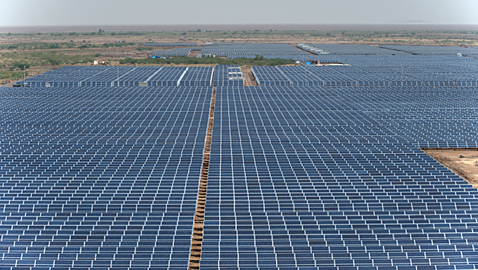
The city of Patna, the capital of Bihar, has the capacity to generate 277 MW of solar power by 2025 using the available rooftops, according to a recently released report by the Centre for Environment and Energy Development, an organisation engaged in development of renewable energy and protection of the environment.
Co-authored by Bridge To India, a specialised company that focuses on strategic consulting, market intelligence and project development in the Indian solar market, the report titled ‘Rooftop Revolution: Uncovering Patna’s Solar Potential’ said that 35 MW of solar power could be produced by the city in the initial phase using the rooftops of government and industrial buildings.
The release of the report at a time when fulfillment of the state capital’s aspirations for 24×7 power supply seem fairly remote assumes significance. Bihar, at present, is striving to turn from an energy starved state to an energy sufficient state. In 2013-14, the state’s power demand stood at 2,465 MW against a power generation capacity of 584 MW (540 MW coal and 44 MW hydro). The peak shortfall was met through power purchase agreements with central power generators and purchases on the spot market.
Bihar’s demand for electricity in the last six years had grown at an annual rate of about 8 per cent. For the year 2014-15, the Central Electricity Authority had anticipated the peak power deficit and energy deficit in the state at 26 per cent and 15 per cent respectively.
“With the proposal to spot purchase all the deficit power from private and unsecured players, the state not only will burden the electricity department and the common man but it will also result in a shortlived relief. A sustainable shift from the inefficient centralised energy delivery system to a diversified decentralised energy delivery system is thus the need of the hour to ensure that the ambitions and aspirations of Bihar are realised,” the report said, adding that solar power could bridge the ever increasing gap that existed in terms of demand and supply of energy and at the same time insure against dirty, unsustainable, uncertain and costly electricity from conventional sources such as coal and diesel. It stressed that political intent was required to realise the vision of powering the state capital with green energy.
The report said that the residential buildings accounted for 86 per cent of the city’s solar potential followed by public and semi-public facilities which accounted for 6 per cent of the potential. Government buildings, industrial buildings and commercial buildings accounted for 3 per cent, 3 per cent and 2 per cent of the total solar potential respectively. It estimated the solar-suitable rooftop space in Patna at around 9 sq. km, which could accommodate 759 MW of solar power.
In addition to mapping the solar potential and viability of the various building types falling under different tariff categories, the report provided details of the business models and scenarios that made solar rooftop advantageous.
In case of residences, the report said, solar rooftop was still very complex and needed fiscal support. However, it pointed out that increasing power tariffs from grid electricity and falling prices of solar systems made solar rooftop a potential and sustainable source of energy.
On the issue of viability, the report said that solar was already viable for government buildings in the city since large solar systems reduced per kilowatt cost considerably. Government buildings, due to their proximity to each other and large roof space, facilitate bundling of projects, which in turn enable large project sizes. Solar power was clearly viable in Patna without long-term capital subsidy, it illustrated through various scenarios.











